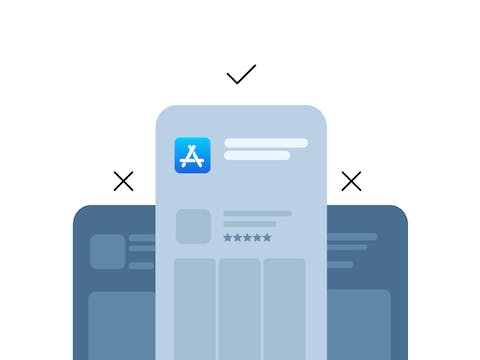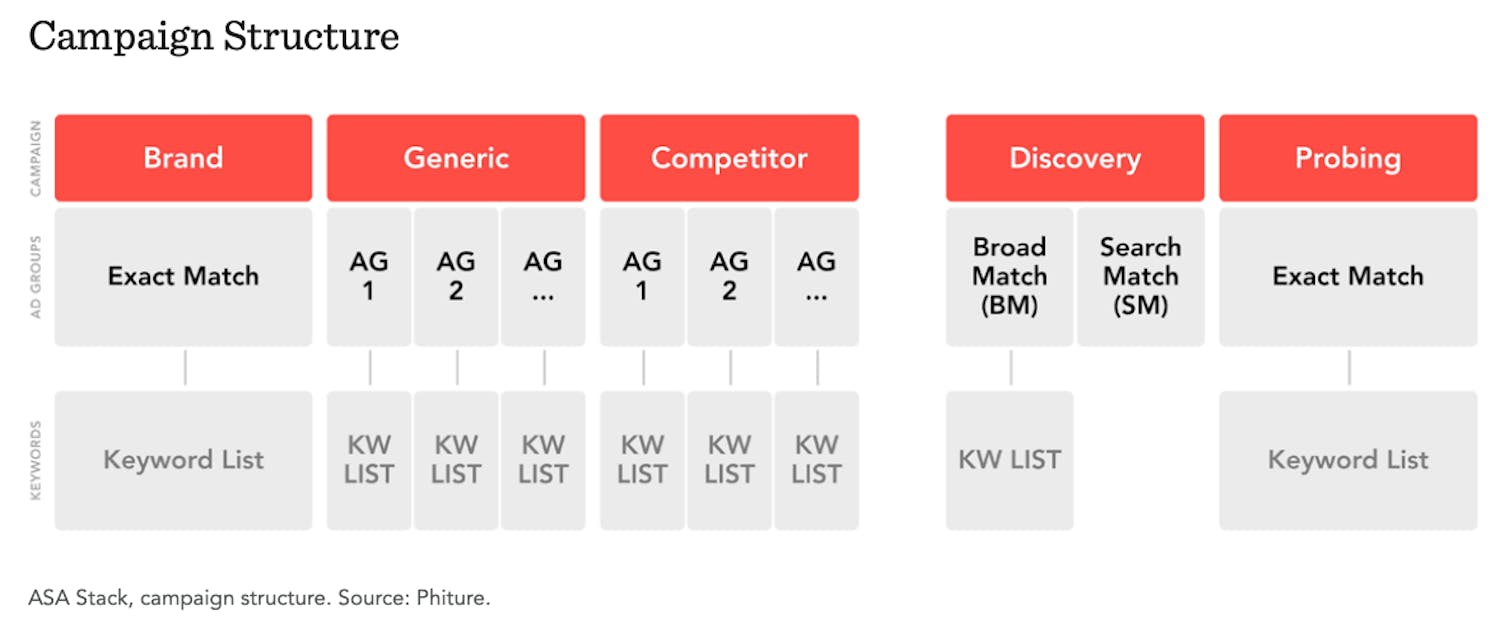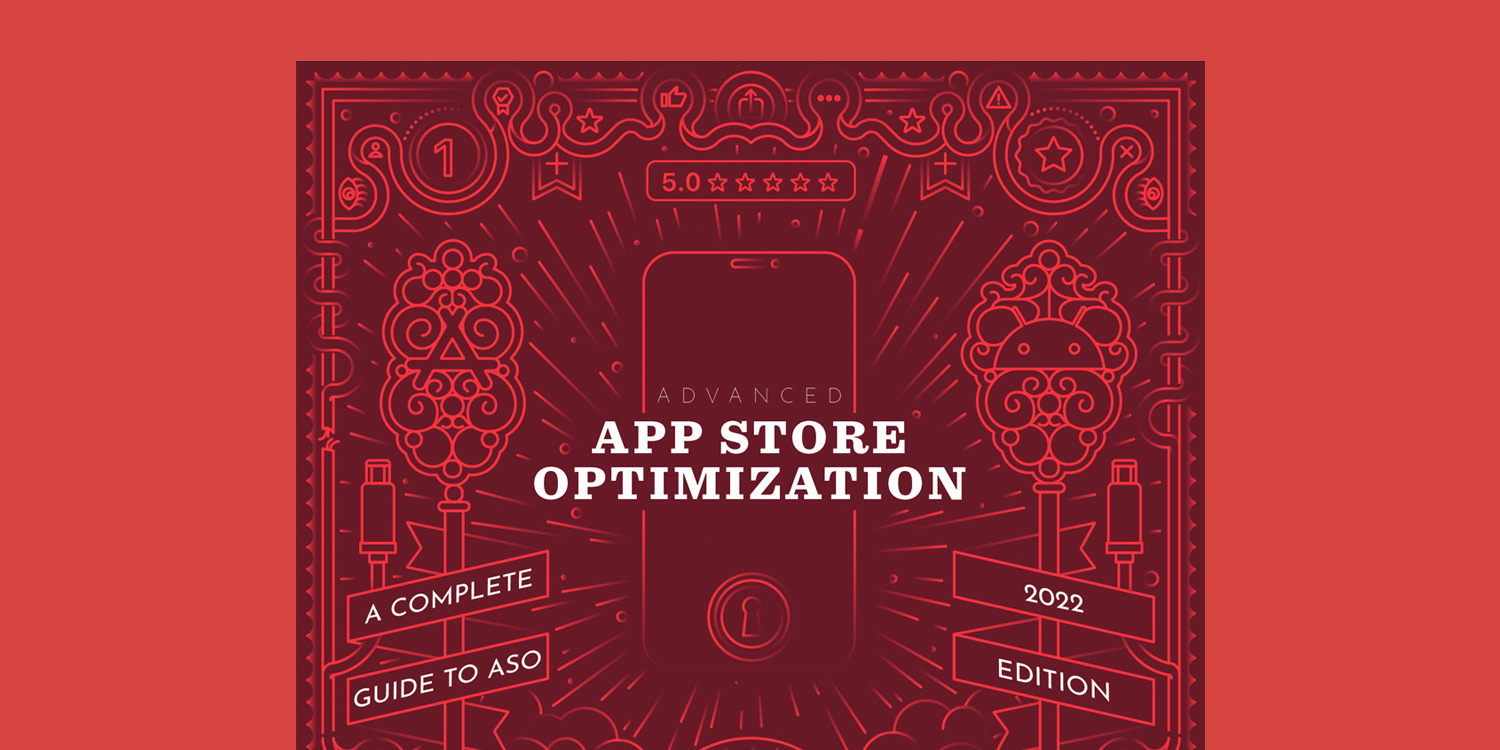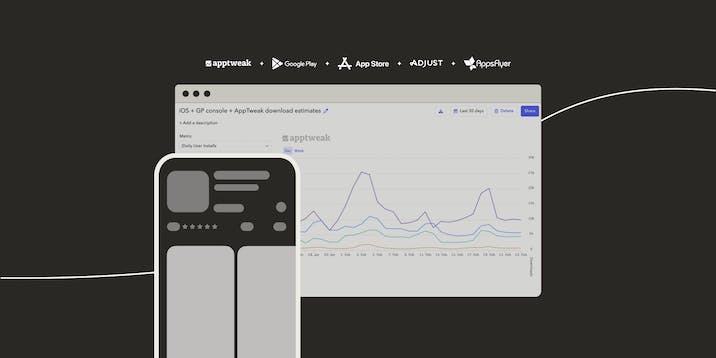
Apple Search Ads: Do’s & Don’ts for App Store Campaigns
While it may seem straightforward to create and run Apple Search Ads campaigns, the devil is in the details. Apple Search Ads is all about micro-management and advanced optimization techniques at the campaign, ad group, and keyword levels.
The Apple Search Ads decisions you make – and those you choose to avoid – can have a significant impact on your performance. Knowing what to do and what not to do is essential to maximize the ROI of your campaigns and scale your business.
In this blog, we’ve highlighted our ASA do’s and don’ts – tips to help you manage your ad campaigns at every level and make the most of this high-search-intent user acquisition (UA) channel.
Not yet familiar with Apple Search Ads? Read our comprehensive beginner’s guide to ASA
Below, we list 6 things you should definitely do to optimize your Apple Search Ads campaigns.
Do: Adjust your bidding strategy over time
Adjusting your Apple Search Ads bidding strategy is important because the performance of your campaigns can vary over time; bid adjustments will allow you to capture more impressions and downloads while controlling your cost per acquisition.
Here are a few tips to keep in mind when adjusting your Search Ads bids:
- Consider increasing bids for keywords with a good volume and relevancy score, and for which you receive only a few impressions in Apple Search Ads.
- Raise bids to scale keywords that already have good relevancy, volumes, tap-through rates, and conversion rates.
- Lower bids for keywords with low tap-through rates and conversion rates, as this will negatively impact your organic performance for these keywords and cost you money.
- If possible, compare the lifetime value associated with a keyword with its cost per acquisition: the lifetime value should be higher than the cost per acquisition – otherwise, you’re losing money.
Search Ads Manager
Create effective campaigns, monitor performance, and find new opportunities to enhance your Apple Search Ads directly in AppTweak.
Limited-time offer: Get exclusive access to our new Search Ads Manager for free with an AppTweak plan.
Do: Start a naming convention for Apple Search Ads campaigns
It’s unlikely to see UA managers with only one or two active Apple Search Ads campaigns. Creating and managing campaigns gets quicker and simpler once you get the hang of things and start following best practices for your ASA campaign structure.
For this reason, you should be sure to establish a naming convention for your campaigns and ad groups that makes it easy to navigate from the start.
Some important elements to include in campaign names (and make them easier to identify) are the app name, country, campaign type, and keyword match type.

Do: Give Discovery campaigns enough time to find keywords
The first time you launch a Discovery campaign, it takes some time for Apple to match your app with relevant search terms. Wait a few weeks for Apple to do its job and gather enough data to provide you with relevant keyword suggestions.
Since we recommend allocating a lower budget for Discovery campaigns than others, it shouldn’t be a problem for you to wait a bit longer for results than usual.
A clear indicator that you still need to wait for Apple to get more data is the “low volume” value. This indicates that the keyword you’ve targeted has not yet received enough Impressions for Apple to draw a conclusion.
Expert tips to choose keywords for your Apple Search Ads campaigns

Do: Divide semantics-based campaigns into thematic ad groups
When doing keyword research for your Apple Search Ads campaigns, you’ll soon realize the keywords you discover can be grouped into different thematic clusters.
One best practice is to create ad groups within your semantics-based campaigns (usually the generic or competitor one) that target keywords sharing a common theme. For instance, if your game includes a PvP game mode, you might want to create an ad group that exclusively targets relevant combinations of “PvP”.
Doing this can help you better monitor your keywords’ performance based on theme (and level of intent). It will also help you set a different CPA goal for each theme-based ad group, and allow you to more easily implement relevant custom product pages.
Learn how to build custom product pages using theme-based ad groups
Do: Prioritize when ad groups overlap
It’s crucial to set different bids for each ad group in cases where ad groups target overlapping demographics, such as one group targeting all eligible users and another targeting a specific demographic, like young people aged 18 to 25.
Setting different bids will allow you to prioritize one ad group over the other when displaying your ads. By assigning different bids, you can allocate more budget or prioritize a higher bid for the ad group that is more relevant or important to you. For example, if you’d like to prioritize the ad group targeting young people aged 18 to 25 because you know they’re more likely to make in-app purchases, you might set a higher bid for that group.
Expert Tip
Setting different bids will give your chosen ads the best chance of being displayed to the right audience within the overlapping demographics. It will also ensure your custom product pages (CPP) will be displayed to your preferred audience.Do: Run Proxy campaigns (if you have the time & money)
While Discovery campaigns can help you find new keyword opportunities through search, they cannot help you measure the performance of these search terms post-install (for example, to differentiate between users who merely installed your app and those who installed and subsequently drove app revenue).
On the one hand, Apple does not track the performance of keywords post-install. On the other hand, MMPs are unable to track whether search terms led to installs. This is because you are not the one actively targeting search terms, Apple is doing it automatically: as a result, MMPs have no visibility on these search terms.

If you want to be certain of the post-install metrics of your search terms before moving them to performance-based (brand, generic, competitor) campaigns, you can first move them to a Proxy campaign.
You’ll want to use this Proxy campaign to run exact match search terms and set competitive bids for them. Regularly monitor the performance of these keywords post-install to check if they do indeed produce good metrics and if you want to include them in your performance-based campaigns.
Expert Tip
Be aware that Proxy campaigns take time and money to run and monitor, as you need to set competitive bids on keywords to get relevant data. Proxy campaigns should therefore only be run if you have the budget to do so.Now that we’ve discussed the “do’s”, let’s move on to the don’ts of Apple Search Ads – the things you shouldn’t do if you want to get the most of your Search Ads campaigns.
Don’t: Increase or decrease bids on keywords too much at a time
Instead of making all your bid adjustments at one time, only increase or decrease your keyword bids by around 20% at once. This will help you better assess the performance of your keywords depending on how much money you spend on them. It can also help you avoid over/under-spending on keywords.
Don’t: Spend as much money on Discovery campaigns
Discovery campaigns are, as the name implies, there to help you discover new keyword opportunities rather than driving downloads to your app. As such, you should adapt your budget for Discovery campaigns.
If you’re unsure where to start, it is usually recommended to spend 20% of your overall Apple Search Ads budget on Discovery campaigns. The other 80% should be for your performance-based brand, competitor, and generic campaigns.
Don’t: Confuse Return on Investment with Return on Ad Spend
When you report on your Apple Search Ads campaigns, you’ll probably look at your return on investment (ROI) and return on ad spend (ROAS). However, the two metrics often get confused:
ROI calculates the profit gained from an advertising campaign by taking into consideration all the marketing efforts made for this campaign (employee salary, training, spend, ect.). On the other hand, ROAS calculates how much money you made for each dollar you spent for this campaign.
ROAS is better used to measure the performance of a specific acquisition channel, for instance Apple Search Ads, whereas ROI measures the overall performance of your marketing campaigns.
Don’t: Overlook cannibalization
While bidding on your own brand terms to protect your app from competition might initially seem like a good idea, you should also be aware that this strategy can sometimes lead to cannibalization and actually increase your cost per acquisition.
If you’re unsure of what cannibalization is, it’s when you end up paying for traffic or installs (in this case, through Apple Search Ads) that would have otherwise been driven organically.
Learn how to measure cannibalization for Apple Search Ads
Expert Tip
To estimate the threat level and/or level of cannibalization for your bid keywords, we recommend investigating whether your competitors are also bidding on your top organic install keywords and what their Share of Voice (SOV) is for these search terms.
Don’t: Miss store visitors with Personalized Ads turned off
Apple Search Ads provides audience targeting options that can seem useful at first glance, allowing you to target users based on age, gender, and customer type (new users, returning users, users of my other apps).
While this can help you reach more qualified store visitors, enabling these audience targeting options means you’ll exclude store visitors who have Personalized Ads turned off.
This can be quite problematic, as it is estimated that only 22% of App Store visitors have Personalized Ads turned on. While there are a few cases of audience targeting options still coming in handy, we recommend mostlyrunning Apple Search Ads campaigns with audience targeting options turned off so you can reach a majority of store visitors with your ads.
If you want to target specific demographics, bid on keywords more relevant to these groups instead (e.g., the majority of people searching for “period tracker” will identify as female).

Don’t: Forget differences between Apple Search Ads console & MMP data
If you’re already familiar with Apple Search Ads, it’s highly likely you’re using Mobile Measurement Partner (MMP) data to decide on which keywords you should bid more or less based on their estimated lifetime value. However, you might have noticed that Apple Search Ads data is not necessarily the same as MMP data.
This is because certain types of downloads are attributed by MMPs to other marketing channels than Apple Search Ads. MMPs, for instance, are better at determining where redownloads initially come from whereas Apple automatically attributes redownloads to Apple Search Ads, effectively hiding where your revenue really comes from. On the other hand, Limit Ad Tracking (LAT) on the App Store means MMPs do not have access to this data, resulting in a lower number of downloads to your app.
Learn how MMP data can help you with ASO
Conclusion
Mastering Apple Search Ads requires a strategic approach that goes beyond the basics. The various do’s and don’ts listed in this article can help you take the first step towards optimizing your Apple Search Ads campaigns in a more advanced and expert way. This means optimizing your bidding strategy, budget, and account structure, implementing the right strategies, and ensuring you don’t miss out on optimization techniques.
Leveraged together, these do’s and don’ts will enable you to effectively improve the ROI of your Apple Search Ads campaigns.
Get started creating Apple Search Ads campaigns with Search Ads Manager on AppTweak.



 Antoine Bentin
Antoine Bentin
 Suleika Vanmaele
Suleika Vanmaele
 Mariia Chernoplyokova
Mariia Chernoplyokova
 Flavien Eyer
Flavien Eyer
 Simon Thillay
Simon Thillay